Science and Technology: July 2024 Current Affairs | General Test Preparation for CUET UG - CUET Commerce PDF Download
IIT-M Team Makes Mineral Nanoparticles with Water Droplets
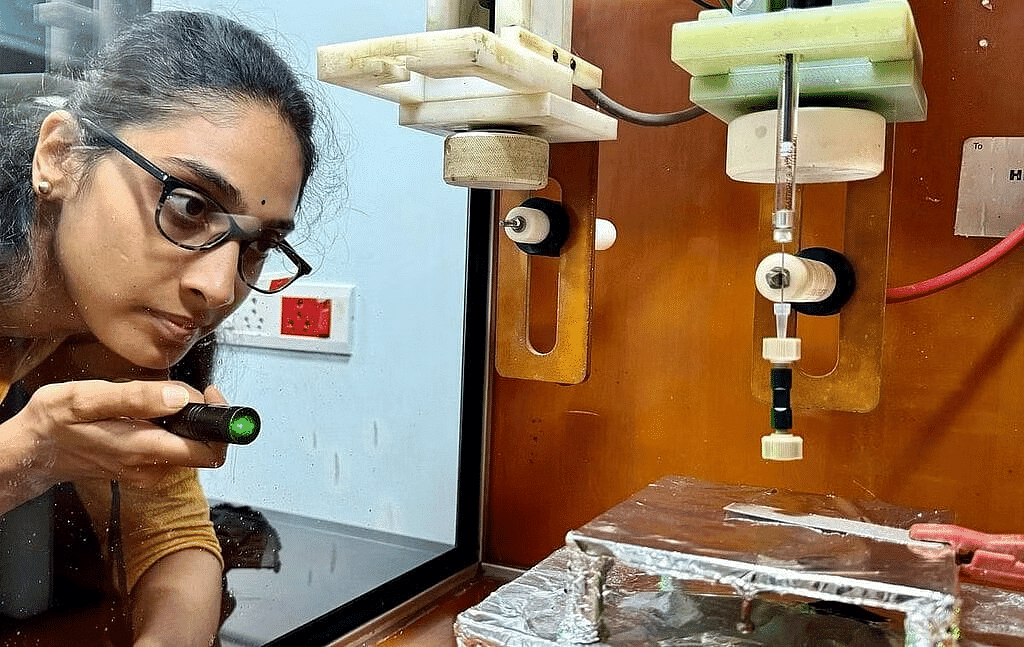
Why in News?
Recently, a study published in the journal Science has unveiled that microdroplets of water have the ability to break down minerals into nanoparticles.
Key Highlights of the Study
Experimental Findings:
- The study illustrated that microdroplets can break down minerals like silica (SiO2) and alumina (Al3) into nanoparticles.
- This was accomplished by applying a high voltage to mineral microparticles suspended in water, causing them to break into nanoparticles within 10 milliseconds.
- The breakup of mineral microparticles into nanoparticles may be attributed to the protons squeezing into crystal layers, the electric fields produced by charged surfaces, and the surface tension of the microdroplets.
Potential Applications:
- This process of nanoparticle formation holds significant implications for agriculture, such as converting unproductive soil into productive land by supplying silica nanoparticles.
- Plants absorb silica in the form of nanoparticles to aid in their growth.
- It also bears relevance to the origins of life, as microdroplets could imitate proto-cells, potentially participating in early biochemical reactions.
- Future investigations may explore whether water microdroplets naturally interact with minerals in atmospheric processes, potentially forming nanoparticles through 'microdroplet showers'.
Gaganyaan Astronauts Selected for Axiom-4 Mission
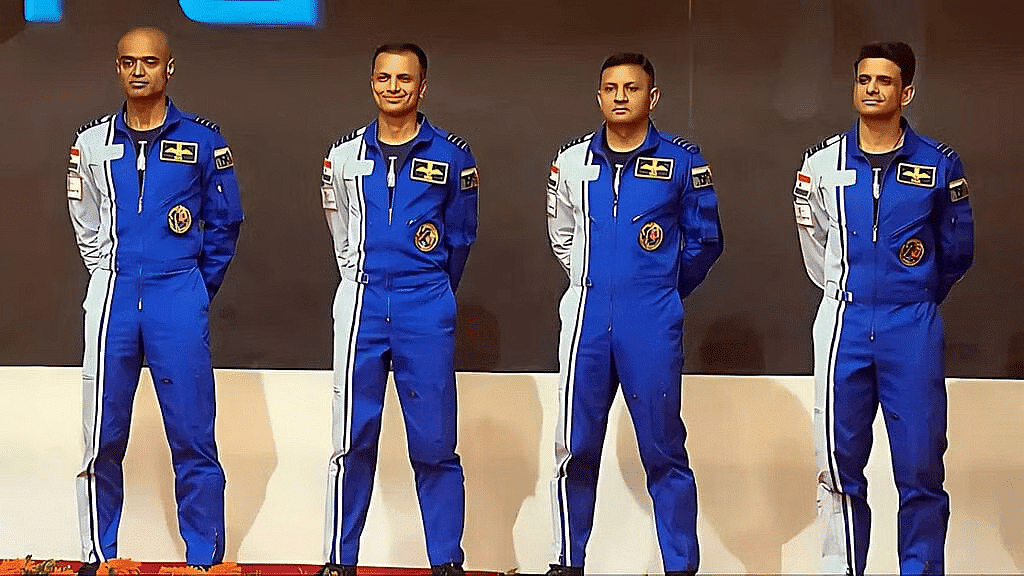
Why in news?
The Indian Space Research Organisation (ISRO) has shortlisted two of its four trained astronauts for the Axiom-4 mission to the International Space Station (ISS) in collaboration with the United States' National Aeronautics and Space Administration (NASA).
What is the Axiom-4 Mission?
- NASA and Axiom Space, an American privately funded space infrastructure developer, signed an order for the fourth private astronaut mission to the ISS, aiming to launch in August 2024 from Kennedy Space Center in Florida.
- The mission aims to dock with the ISS for a fourteen-day duration.
- Indian astronauts will receive training from NASA, international partners, and SpaceX, focusing on spacecraft systems and emergency preparedness, as part of India-US space cooperation goals.
What is the International Space Station (ISS)?
- The ISS is a large, permanently crewed laboratory that orbits Earth, 400 kilometers above its surface. It is home to astronauts and cosmonauts and serves as a unique science laboratory.
- Its research is expected to lead to advancements in many areas, including medicine, technology, science, and understanding the Earth and universe.
- It's a collaboration between 15 countries and five space agencies, namely NASA (United States), Roscosmos (Russia), ESA (European Space Agency), JAXA (Japan Aerospace Exploration Agency), and CSA (Canadian Space Agency).
- An international crew of seven people live and work while traveling at a speed of 7.66 km/sec, orbiting Earth about every 90 minutes. In 24 hours, the space station makes 16 orbits of Earth, traveling through 16 sunrises and sunsets.
Peggy Whitson set the US record for spending the most total time living and working in space for 665 days. The first parts of the ISS were sent and assembled in orbit in 1998. Since the year 2000, the ISS has had crews living continuously on board.
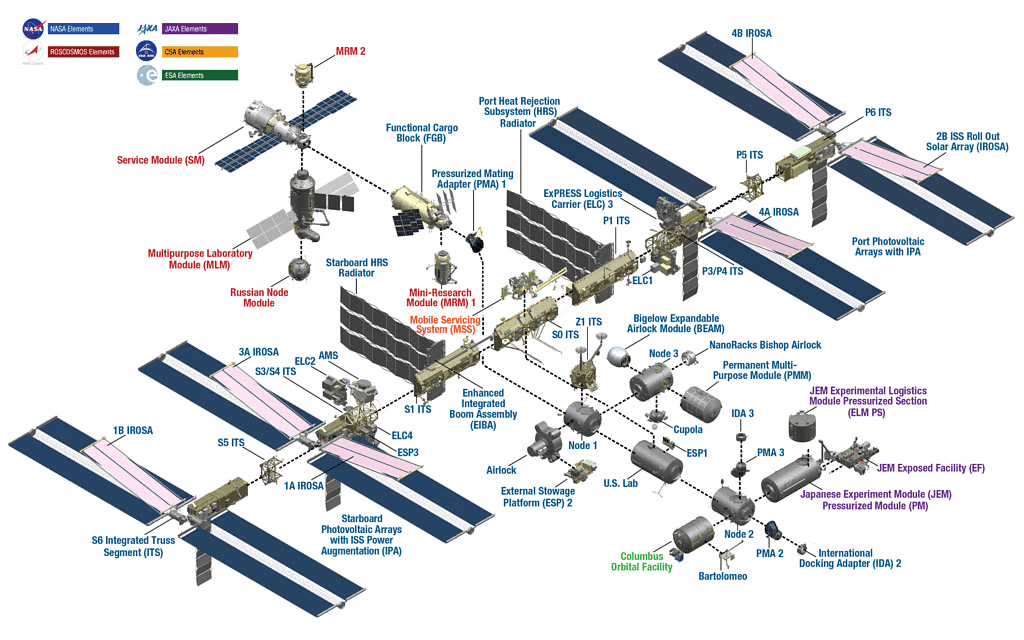
Genome Sequencing
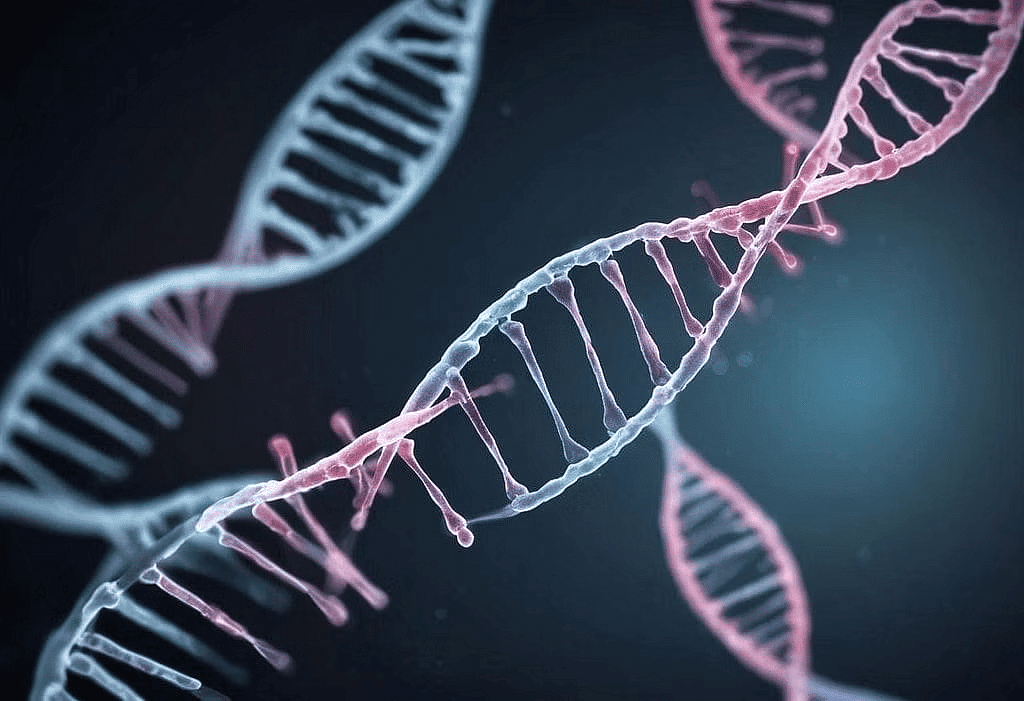 Genome sequencing is the process of determining the DNA sequence of an organism's genome. A genome is a complete set of DNA that contains all of the genes of an organism. Genome sequencing involves figuring out the order of bases in an organism's entire genome. It is supported by automated DNA sequencing methods and computer software to assemble the massive sequence data.
Genome sequencing is the process of determining the DNA sequence of an organism's genome. A genome is a complete set of DNA that contains all of the genes of an organism. Genome sequencing involves figuring out the order of bases in an organism's entire genome. It is supported by automated DNA sequencing methods and computer software to assemble the massive sequence data.
Genome and Genome Sequencing
The genome is the complete set of DNA instructions present in a cell. The human genome is made up of a tiny chromosome in the cell's mitochondria and 23 pairs of chromosomes that are found in the nucleus of the cell. A genome contains all of the information required for a person to develop and function.
- Deoxyribonucleic acid (DNA): It is the chemical substance that holds the instructions required for regulating the growth and development of almost all living things. The two twisted, linked strands that makeup DNA molecules are frequently referred to as a "double helix."
- Each DNA strand is made of four chemical units, called nucleotide bases, which comprise the genetic "alphabet". The bases are adenine (A), thymine (T), guanine (G), and cytosine (C).
- Gene: A gene is a unit of DNA that contains the instructions for making a specific protein or set of proteins.
- Sequencing: The process of determining the exact order of the bases in a strand of DNA is known as sequencing. Because bases exist in pairs and the identity of one of the bases in the pair determines the identity of the other member of the pair, researchers are not required to report both bases of the pair.
- Genome Sequencing: The sequence of base pairs is identical in all humans, there are differences in the genome of every human being that make them unique. The process of deciphering the order of base pairs, to decode the genetic fingerprint of a human is called genome sequencing.
Whole Genome Sequencing
All organisms (bacteria, plants, and mammals) have their own genetic code, or genome, which is made up of nucleotide bases. Whole genome sequencing is a laboratory procedure used to determine the order of bases in the genome of an organism in a single step.

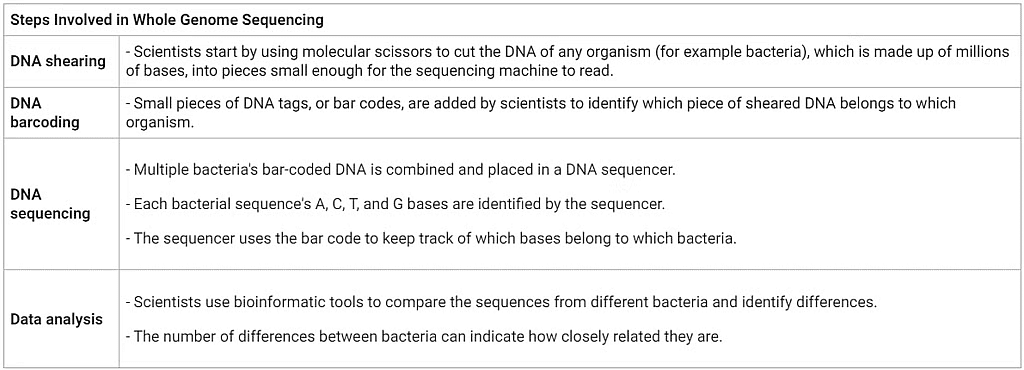
Global efforts towards Genome Sequencing
Various international projects are working together to map the genomes of all plants, animals, fungi, and other eukaryotic life on Earth.
Human Genome Project
The Human Genome Project was a significant global scientific endeavour whose primary goal was to create the first sequence of the human genome.
- The Project formally began in 1990 and was completed in 2003, to discover all the estimated 20,000-25,000 human genes and make them accessible for further biological study.
- Objectives: To create three research tools that will enable scientists to identify genes that are involved in both rare and common diseases.
- To investigate and educate the public about the ethical, legal, and social implications of new genetic technologies.
Encyclopedia of DNA Elements (ENCODE) Project
- The Encyclopedia Of DNA Elements (ENCODE) project began in 2003 by the US National Human Genome Research Institute (NHGRI).
- It is an international research effort funded by the National Human Genome Research Institute (NHGRI) that aims to identify all functional elements (FE) in the human genome.
- FE include protein-coding regions, regulatory elements such as promoters, silencers, or enhancers, and sequences that are important for chromosomal structure.
- Objective: Tocreate a comprehensive list of functional elements in the human genome, including elements that act at the protein and RNA levels, as well as regulatory elements that control cells and the conditions under which a gene is active.
Earth Biogenome Project
- The Earth BioGenome Project (EBP), a biology moonshot, aims to sequence, catalogue, and characterize the genomes of all eukaryotic biodiversity on Earth over a ten-year period.
- The project was officially launched in 2018 and is expected to take approximately ten years to complete.
- Objectives: Creating a digital libraryof all known eukaryotic life's DNA sequences can aid in the development of effective tools for preventing biodiversity loss and pathogen spread, monitoring and protecting ecosystems, and improving ecosystem services.
India’s efforts towards Genome sequencing
- Today, genomic data has enormous potential to improve healthcare strategies in a variety of ways, including disease prevention, improved diagnosis, and optimized treatment.
- Genome sequencing technologies are now more widely available to the general public in India.
- However, information on variants linked to a number of major diseases is not readily available in publicly accessible databases.
- In order to fill the gap of whole genome sequences from different populations in India, the Government of India has launched many programmes.
IndiGen Programme
- The IndiGen programme launched in 2019 aims to undertake whole genome sequencing of thousands of individuals representing diverse ethnic groups from India.
- The goal is to enable genetic epidemiology and develop public health technology applications using population genome data.
- IndiGen is endorsed by the Council for Scientific and Industrial Research (CSIR).
- The outcomes of the IndiGen will be utilized towards understanding the genetic diversity on a population scale, making available genetic variant frequencies for clinical applications, and enabling genetic epidemiology of diseases.
Indian Initiative on Earth Bio-Genome Sequencing
- The project was launched in 2020 and is part of the Earth Biogenome Project.
- The project will allow for the collection and preservation of endangered and economically significant species.
- The initial phase of IIEBS will include the whole genome sequencing of 1,000 plant and animal species, which will take five years to complete.
- The Jawaharlal Nehru Tropical Botanic Garden and Research Institute (JNTBGRI) plays a key role in a nationwide project to decode the genetic information of all known species of plants and animals in the country.
Genome India
- Genome India is a national project launched in 2020. It is funded by the Department of Biotechnology, and spearheaded by the Centre for Brain Research (CBR).
- In the first phase of the study, the project aims to identify genetic variations in 10,000 representative individuals from across India using whole genome sequencing.
Project aimed to
- Create an exhaustive catalogue of genetic variations in Indians.
- Create a reference haplotype structure for Indians.
- Create low-cost genome-wide arrays for research and diagnostics.
- Create a biobank for DNA and plasma samples for future research.
- Significance: Creating an Indian genome database allows researchers to learn about genetic variants unique to India's population groups and use this information to tailor drugs and therapies.
- Objective: To "unravel the genetic underpinnings of chronic diseases currently on the rise in India.
Significance of Genome Sequencing
- Genome sequencing has become an important tool in pharmacogenomics, clinical diagnosis, and translational vaccine development.
- Whole genome sequencing provides detailed and precise data for identifying outbreaks sooner.
- Additionally, whole genome sequencing is used to characterize bacteria as well as track outbreaks.
- Dramatic advancements in DNA-sequencing technologies have massively reduced the time and cost required to sequence an entire human genome.
- Genomic information has been instrumental in identifying inherited disorders and characterizing the mutations that drive cancer progression.
Applications of Genome Sequencing
- Biological research: The ability to read genetic sequences is extremely useful in biological research because the base sequence contains information for making proteins as well as regulating gene functions.
- Forensics: Sequencing has proven to be a powerful tool in forensics. Because differences in DNA and RNA sequences can differentiate organisms down to species and individual levels, it can help to classify diseases, identify therapeutic targets, and customize treatments.
- Diagnostics:
- Pre-natal screening: It has also been used in prenatal screening to determine whether the foetus has any genetic disorders or anomalies.
- Evaluate disorders: Genome sequencing has been used to assess rare disorders, preconditions for disorders, and even cancer from a genetic viewpoint, rather than as diseases of specific organs.
- Drug Efficacy: Genome sequencing can provide information about drug efficacy or adverse drug effects.
- The relationship between drugs and the genome is called pharmacogenomics.
- Vaccine development: Sequencing of viruses (e.g. ebola, coronavirus) and bacteria has led to the development of vaccines against them, once knowing their variants or strains.
- Genomic data of pathogens could reveal hidden pathways of transmission.
- Population Studies: Advanced analytics and AI could be applied to critical datasets generated by collecting genomic profiles across the population, allowing for a better understanding of disease causation and potential treatments.
- This is especially relevant for rare genetic diseases, where large datasets are required to find statistically significant correlations.
- Agriculture and food security: Genome sequencing has the power to revolutionize food security and sustainable agriculture by reducing the risks from disease outbreaks, and improving agriculture through effective plant and animal breeding, detecting multiple pathogens, etc.
Limitations of Genome Sequencing
- Data Analysis: A vast amount of data is generated, which requires extensive analysis and interpretation.
- Structural variants: While technologies used to sequence DNA are highly accurate at deciphering the sequence, the majority of available technologies have limited scope in being able to determine so-called structural variants.
- These are alterations that affect large segments of DNA at a time, such as duplications, deletions, and inversions.
- Incomplete research and irrelevant data: Despite growing knowledge in genomics, many genes still have unknown roles and a large number of genomic variants have not been identified as benign or pathogenic.
- Ethical concerns: Storing the large amount of data generated by WGS poses challenges related to capacity, cost, and privacy concerns, including potential ethical dilemmas with insurance companies and family members.
- Not suitable for larger genomes: Despite being a faster method, whole genome sequencing is not suitable for larger genomes because they have a number of repetitive DNA sequences for which assembling processes is sometimes challenging.
Satellite-Based Communication
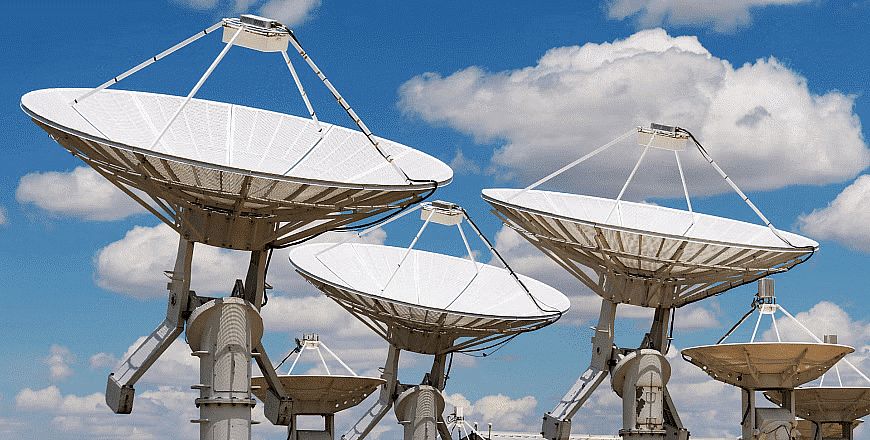
Why in News?
Recently, satellite-based communication for internet connectivity has gained traction, although its evolution has shifted away from being user-centric, raising questions about its viability for users in India.
What is Satellite Based Communication?
About:
- A communications satellite is a type of artificial satellite placed in Earth's orbit to send and receive communication data between a source and a destination. With over three thousand communication satellites in multiple orbits today, millions worldwide rely on satellite communications to deliver radio, television, and military applications.
- Satellite communications have opened access to voice and data communication services across the globe in places where terrestrial cellular and broadband connectivity is not available or network coverage is patchy.
Types
- Geostationary Earth orbit (GEO)
- Medium Earth orbit (MEO)
- Low Earth orbit (LEO)
- Highly elliptical orbit (HEO)
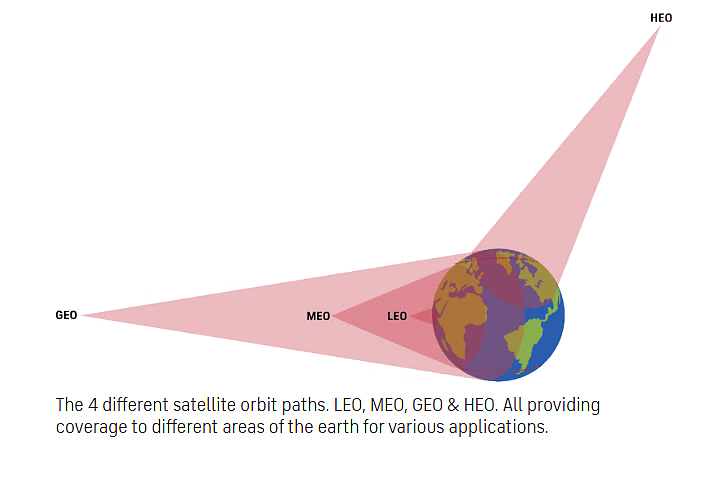
Working
- Satellite communications use orbiting satellites and ground stations to transmit and relay information via microwaves between points on Earth.
- There are three stages in the process: Uplink, Transponder, Downlink. For example, in live television, a broadcaster sends a signal to a satellite (uplink), which then boosts and changes the frequency of the signal (transponder), before sending it back to Earth stations (downlink).

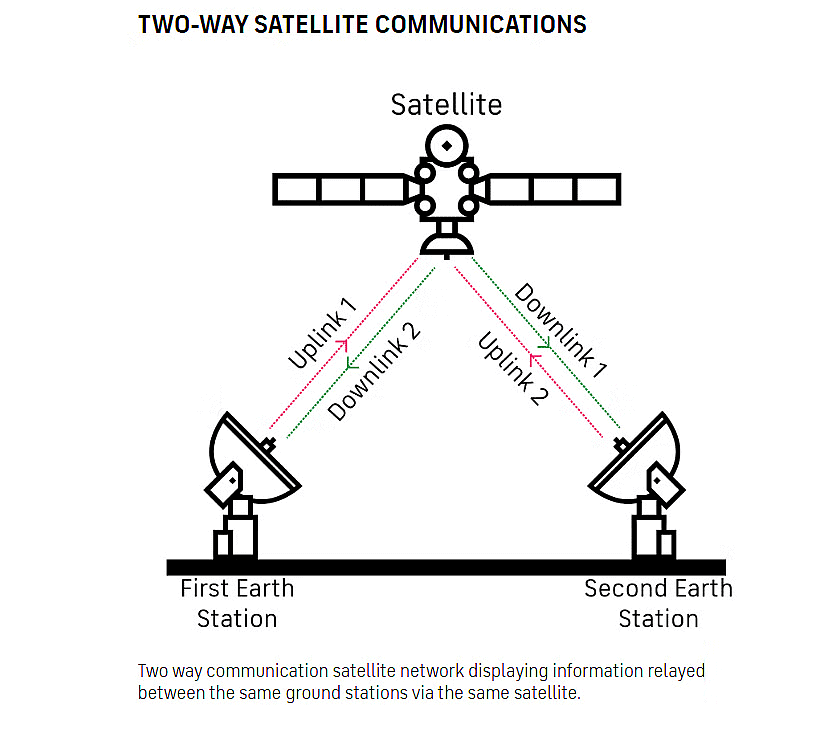
Current Status of Satcom Services in India
- Even though technology is ready for India, Satcom services are not yet operational in India primarily due to pending allocation of satellite bandwidth by the government.
- Recently, Reliance Industries' Jio Platforms has received approval from India's space regulator, IN-SPACe, to deploy satellites for gigabit fibre internet services, pending additional clearances from the telecom department to commence operations.
Target Audience and Services
Satcom operators plan to target both individual consumers and enterprises. Starlink is known for its consumer-focused approach with portable routers, while Airtel and Reliance Jio are looking at both consumer and enterprise markets.
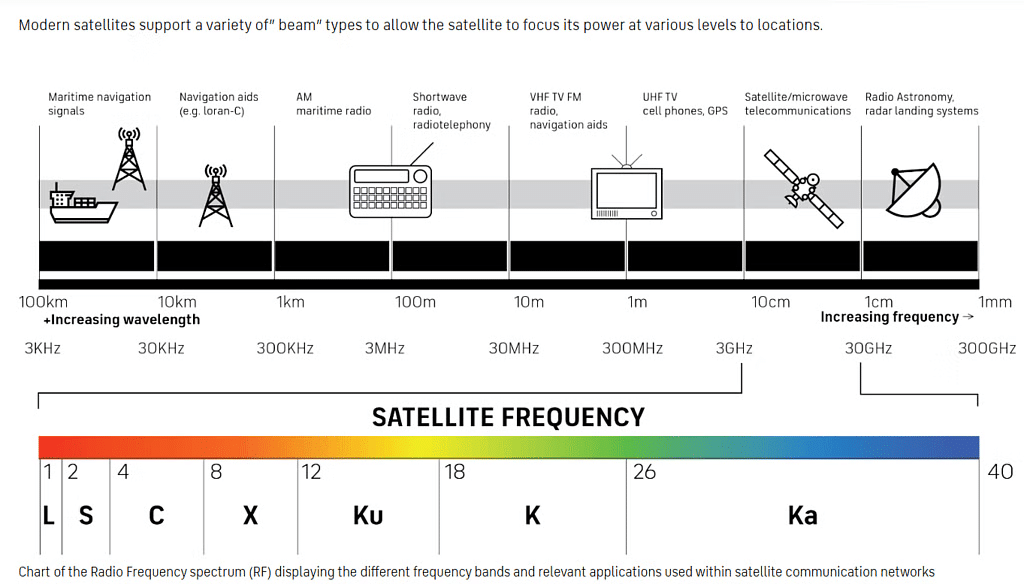
Technological Readiness
Device compatibility is an issue as specialised antennas are required to receive satellite signals. This adds to the cost for consumers. Moreover, mainstream integration of satellite receivers in consumer devices has been limited so far, despite efforts by companies like Apple and Qualcomm.
Challenges and Limitations
Satcom services face challenges such as high setup costs, especially for consumer applications. Cost of equipment, including specialised antennas, remains a barrier. Pricing is another concern as satcom services are perceived as expensive compared to terrestrial broadband.
Future Outlook
The future of satcom in India hinges on regulatory approvals, technological advancements, and addressing cost concerns. The entry of new players like Project Kuiper could potentially intensify competition and innovation in the market.
Global INDIAai Summit
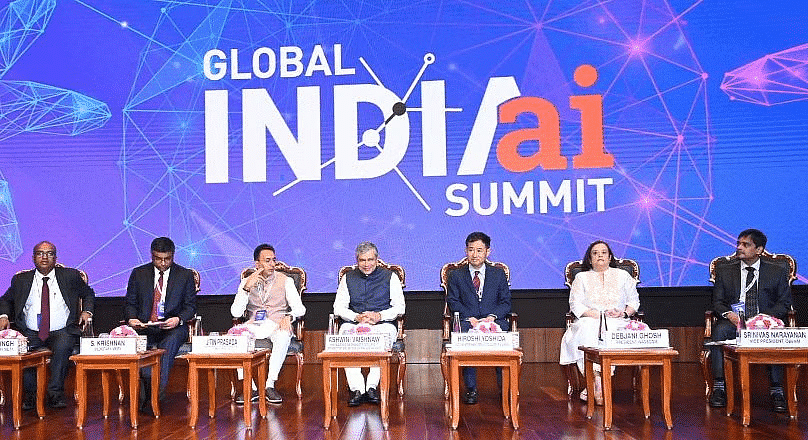
Why in News?
The Global INDIAai Summit, held at Bharat Mandapam in New Delhi, has concluded successfully. This landmark event brought together experts, policymakers, and enthusiasts to discuss the future of Artificial Intelligence (AI) in India and globally.
Key Highlights and Outcomes of the Summit
Global AI Discourse:
- India emphasized making AI accessible to all, regardless of socio-economic background.
- Discussions focused on India's unique needs in AI development and its aspirations for global leadership in AI.
- The summit provided a platform for Global South countries to express their AI-related concerns and acknowledge India's role in bridging the gap with the Global North.
INDIAai Mission Focus:
- India showcased its commitment to building an inclusive AI ecosystem through the INDIAai Mission.
- Sessions highlighted core areas of the mission, including compute capacity, foundational models, datasets, application development, future skills, startup financing, and safe AI.
- Discussions covered various implementation aspects like developing multi-Large Language Models (LLM) models, platformization of AI-ready data, and creating a partner ecosystem with a multi-stakeholder approach.
Global Partnerships:
- Collaborative AI on Global Partnership (CAIGP) and Global Partnership on Artificial Intelligence (GPAI) members worked towards bridging the global AI divide.
- GPAI, with 29 member countries including India, aims to support research and activities on AI-related priorities to bridge theory and practice.
- India's role as the lead chair of GPAI in 2024 involves convening global AI experts to discuss key issues and promote trustworthy AI.
GPAI Consensus:
- Members agreed on GPAI's future vision, highlighting the transformative potential of AI and a commitment to human-centric AI development.
OECD-GPAI Partnership:
- An integrated partnership on AI was announced between the Organisation for Economic Co-operation and Development (OECD) and GPAI in New Delhi.
- India strategically secured GPAI's independent identity alongside OECD members, contributing to global AI governance discussions.
- However, the secretariat remains with the OECD despite India's push for independence, and non-OECD GPAI members operate under OECD's administrative oversight.
Startup Ecosystem Support:
- Rs. 2,000 crore from the INDIAai Mission's budget was allocated to support Indian startups developing AI-based solutions.
- Plans were discussed to provide subsidized access to GPU infrastructure for startups, addressing the crucial need for compute power in AI development.
- The summit highlighted strategies to address key challenges faced by AI startups, including access to datasets, skill development, and fostering innovation.
AI Education:
- Emphasized the importance of age-appropriate AI learning environments to enhance AI literacy.
Sector-Specific Insights:
- Explored AI applications in AgriStack, data-driven credit disbursement, and the integration of AI in government services for improved efficiency and citizen services.
- Discussions covered legal frameworks, dataset platforms, and the significance of data management in governance.
Ethical and Human-Centric AI:
- Reaffirmed the commitment to fostering trustworthy and human-centric AI development.
- Participants acknowledged emerging risks posed by AI systems and emphasized responsible development in alignment with OECD and UNESCO recommendations on AI ethics.
Artificial Intelligence Preparedness Index (AIPI)
- AIPI evaluates countries based on their digital infrastructure, human capital, labor policies, innovation, integration, and regulation. Countries with advanced digital infrastructure tend to score higher on the index. Availability of skilled workforce and educational systems supporting AI skills are crucial factors.
- The AIPI Dashboard categorizes countries into Advanced Economies (AE), Emerging Market Economies (EM), and Low-Income Countries (LIC).
- India is ranked 72 with a rating of 0.49, categorized as an EM. Although India performs relatively well among emerging market economies, it lags behind some regional peers like China (0.63).
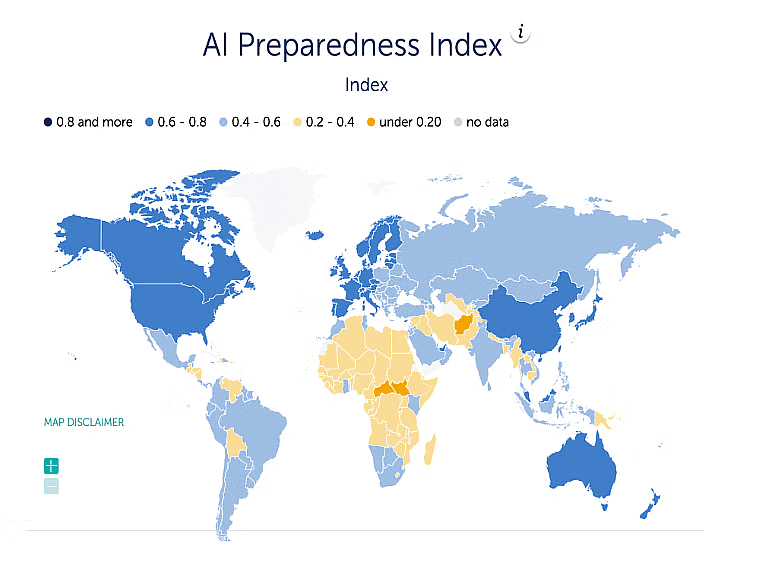
Mains Question
Discuss the importance of global partnerships, such as the Global Partnership on Artificial Intelligence, in overcoming the global AI divide. What role does India play in these partnerships?
Development of Polio Vaccines
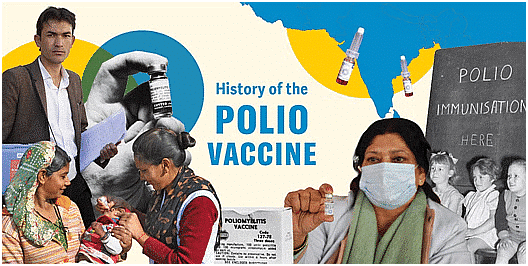
Why in news?
The wild poliovirus is beginning to reappear in big cities in Afghanistan and Pakistan, due to vaccine hesitancy, misinformation, conflict, poverty, and limited access to these isolated regions. As a result, the World Health Organization's Global Polio Eradication Initiative is set to miss its deadline of eradicating polio by the end of 2026. The two vaccines namely Inactivated Polio Vaccine (IPV) and Oral Polio Vaccine (OPV) have helped in nearly eradicating polio from the world.
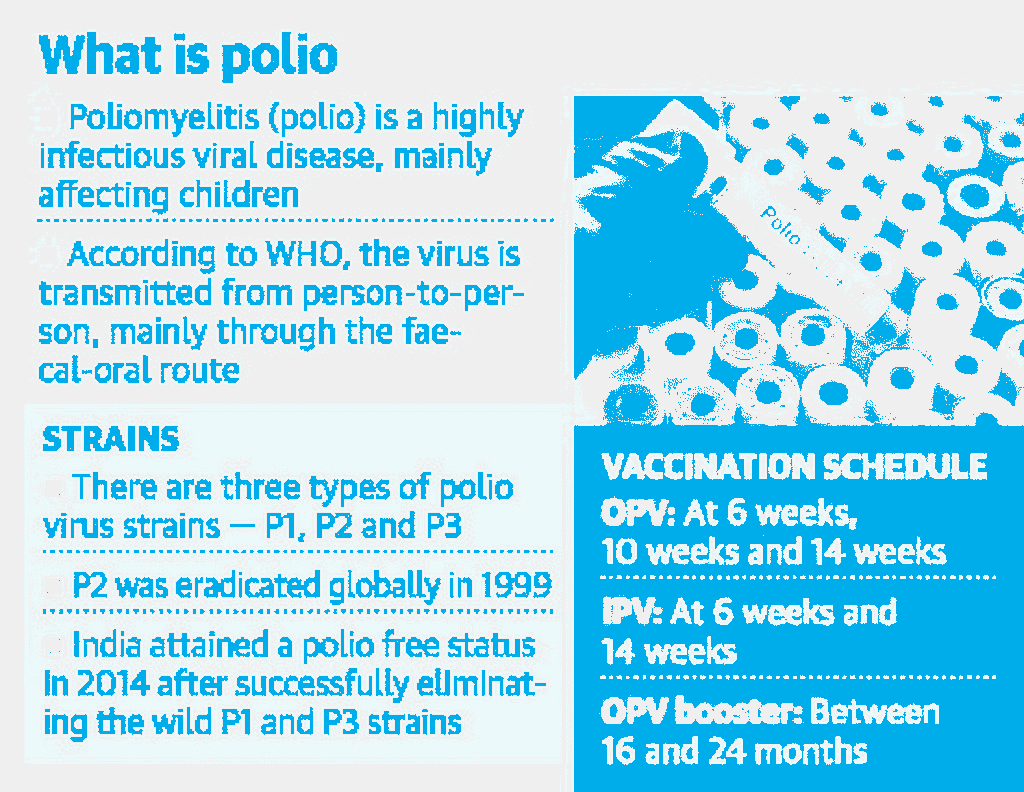
What is the History of Development of Polio Vaccines?
The development of the 2 polio vaccines - the Jonas Salk and the Albert Sabin was a result of several key breakthroughs:
- Culturing the Poliovirus in Non-Nerve Cells: In 1948, microbiologists discovered a method to grow the poliovirus in human muscle skin cells, rather than just in nerve cells as was previously believed. This allowed for the mass production of the poliovirus, crucial for vaccine research and development.
- Development of the Inactivated Polio Vaccine (IPV): Jonas Salk developed the first successful polio vaccine by growing the poliovirus, inactivating it and injecting it into test subjects. The IPV generated systemic immunity, as it was introduced into the muscle.
- Development of the Oral Polio Vaccine (OPV): Albert Sabin developed the OPV, which contained live, weakened poliovirus strains that were administered orally. The OPV induced a powerful protective mucosal immune response in the gut, where the virus begins its infection.
What are Advantages and Disadvantages of IPV and OPV?
Advantages:- IPV is made from killed or inactivated poliovirus, which means it cannot cause the disease.
- IPV is safe for use in immunocompromised individuals, as it does not contain live virus.
- IPV provides long-lasting immunity and does not require multiple doses to maintain protection.
Disadvantages:
- IPV is more expensive to produce and administer compared to OPV.
- IPV requires multiple doses (usually a series of 2-4 shots) to achieve full immunity.
- IPV does not provide the same level of mucosal immunity as OPV, which can limit its ability to interrupt the transmission of the virus.
What are the Key Facts about Polio?
- (poliomyelitis) is a highly infectious viral disease that enters the body through the mouth, multiplying in the intestine before invading the nervous system.
- It mainly affects children under 5 years of age.
- The incubation period for poliovirus is usually 7-10 days, but it can range from 4-35 days.
- Initial symptoms of poliovirus infection include fever, fatigue, headache, vomiting, stiffness in the neck, and pain in the limbs.
- Up to 90% of those infected with poliovirus experience no or mild symptoms, often going unrecognized.
- One in 200 infections leads to permanent paralysis of the legs, which can occur within a few hours of infection.
- 5-10% of those paralyzed by poliovirus die when their breathing muscles become immobilized.
- The virus is shed by infected people, usually children, through feces, and can spread quickly in areas with poor hygiene and sanitation systems.
- Cases due to wild poliovirus have decreased by over 99% since 1988, from an estimated 350,000 cases in more than 125 endemic countries, to just 2 endemic countries (as of October 2023).
- India received polio-free certification by the WHO in 2014, after three years of zero cases.
What are the Measures Taken to Eradicate Polio?
Global:- Global Polio Eradication Initiative: It was launched by national governments and spearheaded by the WHO, Rotary International, the United States Centers for Disease Control and Prevention (CDC), and the United Nations Children's Fund (UNICEF).
- World Polio Day: It is observed every year on 24 in order to call on countries to stay vigilant in their fight against the disease.
India:
- Pulse Polio Programme
- Intensified Mission Indradhanush 2.0
- Universal Immunization Programme (UIP): 1985 with the modification to 'Expanded Programme of Immunization (EPI)'. The objectives of the Programme include: Rapidly increasing immunization coverage, Improving the quality of services, Establishing a reliable cold chain system to the health facility level, Introducing a district-wise system for monitoring of performance, Achieving self-sufficiency in vaccine production.
DBS Brain Implant Surgery for Epilepsy Treatment
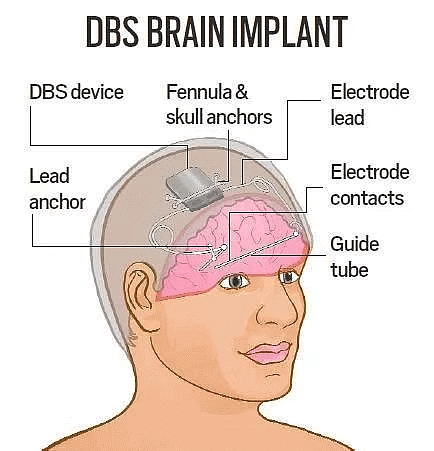 Why in news?
Why in news?
Recently, a UK-based teenager has become the first person in the world to be fitted with a brain implant device to help bring his epileptic seizures under control. The Deep Brain Stimulation (DBS) device was inserted in his skull which reduced his daytime seizures by 80%.
What is Epilepsy Disorder?
About Epilepsy
- It is a central nervous system (neurological) disorder in which brain activity becomes abnormal, causing seizures or periods of unusual behavior, sensations, and sometimes loss of awareness.
Causes
- It is caused by abnormal electrical activity in the brain.
- The disease has no identifiable cause in nearly 50% of the cases. However, head trauma, tumors in the brain, some infections like meningitis, or even genetics can lead to epilepsy.
- It's more common in young children and older adults. It occurs slightly more in males than in females.
Available Treatment of Epilepsy
- Anti-seizure Medications: These are the first line of treatment, aiming to control seizure frequency and severity.
- Ketogenic diet: A high-fat, low-carbohydrate diet can be remarkably effective, particularly in children with medication-resistant epilepsy.
- Epilepsy Surgery: Doctors can carry out brain surgery to remove a portion of the brain where the seizures originate.
- Corpus Callosotomy: In this surgical procedure, doctors remove the corpus callosum (a part that connects both halves of the brain) that will not allow abnormal electrical signals to travel from one half of the brain to another, preventing abnormal electrical discharges from spreading and causing seizures.
What is the DBS Brain Implant Technology to Treat Epilepsy?
About
- It involves implanting a medical device with electrodes that deliver mild electrical currents to specific brain regions linked to seizures.
- DBS is considered for patients with epilepsy where traditional medications haven't controlled seizures.
- Unlike surgery that removes brain tissue, DBS offers a more targeted approach with potentially fewer side effects.
Working
- The device is a neurostimulator delivers constant electrical impulses to the brain to disrupt or block abnormal seizure-causing signals.
- Two electrodes were inserted deep into the brain, reaching the thalamus, a relay station for motor and sensory information. The electrodes are connected to the neurostimulator device.
- The device can be recharged wirelessly using a headphone.
Advantages
- Effective Seizure Control: It helps reduce seizure frequency by around 40% in some patients.
- Alternative for Complex Epilepsy: It offers a viable alternative for patients with epilepsy originating from multiple brain regions where surgery is difficult or impractical.
- Treatment-Resistant Cases: It can be a valuable option when traditional interventions like medications and dietary modifications have failed to achieve adequate seizure control.
Limitations
- It is not a guaranteed cure.
- It can be expensive with a total cost that can reach around Rs 17 lakh.
- Success rates are lower compared to well-established surgical approaches. Brain surgery can achieve seizure freedom in nearly 90% of suitable cases.
PraVaHa
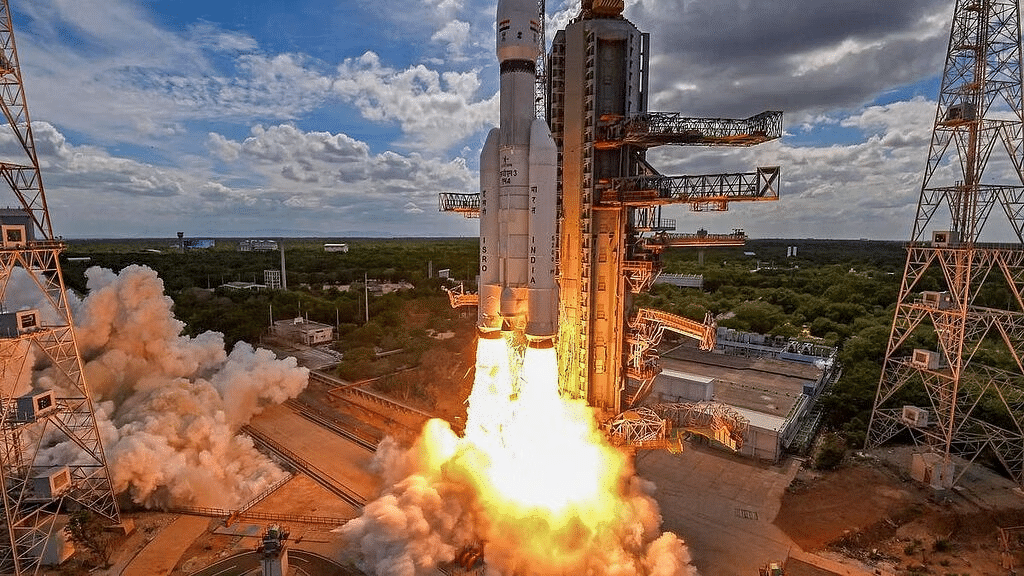
Why in news?
The Indian Space Research Organisation (ISRO) recently developed Computational Fluid Dynamics (CFD) software named PraVaHa.
About PraVaHa Software
- Parallel RANS Solver for Aerospace Vehicle Aero-thermo-dynamic Analysis (PraVaHa) is developed in ISRO's.
- It can simulate external and internal flows on launch vehicles, winged and non-winged re-entry vehicles.
- PraVaHa has been extensively used in program for aerodynamic analysis of human-rated launch vehicles, viz, HLVM3, Crew Escape System (CES), and Crew Module (CM).
- The software is secure and flexible enough to support collaborative development with academic institutions and government labs.
- Currently, the PraVaHa code is operational to simulate airflow for Perfect Gas and Real Gas conditions.
- Validations of the code are underway for simulating the effects of chemical reactions that occur during air dissociation upon 'earth re-entry' and 'combustion' as in scramjet vehicles.
- PraVaHa is expected to replace most of the CFD simulations for aero characterisation, which are currently being carried out using commercial software.
- Besides, this software is expected to help academia and other institutions, engaged in the design of missiles, aircraft, and rockets to find solutions to complex aerodynamic problems.
Importance of Computational Fluid Dynamics (CFD)
- Initial aerodynamic design studies for launch vehicles demand evaluation of a large number of configurations.
- Any aerospace vehicle moving through the Earth's atmosphere during launch or re-entry is subjected to severe aerodynamic and aerothermal loads in terms of external pressure and heat flux.
- Understanding the airflow around aircraft, rocket bodies, or CM during earth re-entry is essential to design the shape, structure, Thermal Protection System (TPS) required for these bodies.
- Unsteady part of aerodynamics contributes to serious flow issues around such rocket bodies and creates significant acoustic noise during the mission.
- CFD is one such tool to predict the aerodynamic and aerothermal loads, which solve numerically the equations of conservation of mass, momentum, and energy along with the equation of state.
India to Join First ‘High-Altitude Platform

Why in news?
CSIR-National Aerospace Laboratories (NAL) has successfully tested an unmanned aerial vehicle, called High Altitude Pseudo Satellite (HAPS) at Challakere, Karnataka, earlier this month.
- Since the 1990s, a number of initiatives have been launched worldwide to explore the potential applications of High Altitude Pseudo Satellites, also called High Altitude Platform Stations (HAPS).
- HAPS are aircraft positioned above 20 km altitude, in the stratosphere, for very-long-duration flights counted in months and even years.
- These unmanned aircraft may be airplanes, airships or balloons.
- These solar-powered vehicles have been designed to plug the missing link between unmanned aerial vehicles (UAVs) flying in lower altitudes and conventional satellites in space.
The use of HAPS is considered for a variety of applications such as:
- Telecommunications
- Emergency/public safety communications
- Intelligent transportation systems
- Maritime surveillance
- Environmental monitoring
- Land border control applications, etc.
Compared to ground-based communication networks, HAPS can cover larger areas with less interference.
- They could also help ease data transfer when used as an intermediate conduit between a satellite and ground-based telecom networks.
- Unlike regular satellites that are expensive to build and launch, HAPS cost far less and are easier to launch.
- In India, Hindustan Aeronautics Limited (HAL) in 2022 had announced that it is developing a “futuristic” high altitude pseudo satellite in collaboration with a startup company.
- With a long and complex land border of about 15,000 km and a coastline of about 7,500 km, safeguarding the borders is crucial for India and necessitates varied solutions.
- Hovering at the edge of the Earth’s atmosphere, HAPS can provide services towards efficient border patrolling, tracking movements deep into the enemy territory or in the deep seas with their sharp focus on one area.
- Equipped with high-definition optical and infra-red cameras, state-of-the-art sensors, these aerial platforms are suitable for round-the-clock missions, border patrolling, target tracking, maritime surveillance and navigation, and even missile detection.
- China’s state-owned aerospace and defense conglomerate, Aviation Industry Corporation of China (AVIC), has been working on varied HAPS platforms for surveillance purposes.
- In 2018, it successfully tested its solar-powered Morning Star drone which can reportedly stay airborne for months.
- The 5-metre-long system, with a wingspan of 11 meters and weighing 23 kg, rose to about 3 km and stayed put for about eight hours.
- A series of tests have been planned and they are expected to culminate in a full-bodied craft – with a wingspan of 30m (nearly as much as a Boeing 737) – by 2027.
- It will be able to rise to 23 km and stay airborne for at least 90 days.
- NAL aims to design and build the HAPS’ propellers, battery management system, carbon-composite airframe, flight-control system, and the high-powered electric motors that can withstand extreme temperature ranges.
- Last month, in an unrelated project, a Bengaluru-based private company carried out the first test-flight of a solar-powered, long-endurance drone that flew for 21 hours.
Donanemab: A New Alzheimer's Drug
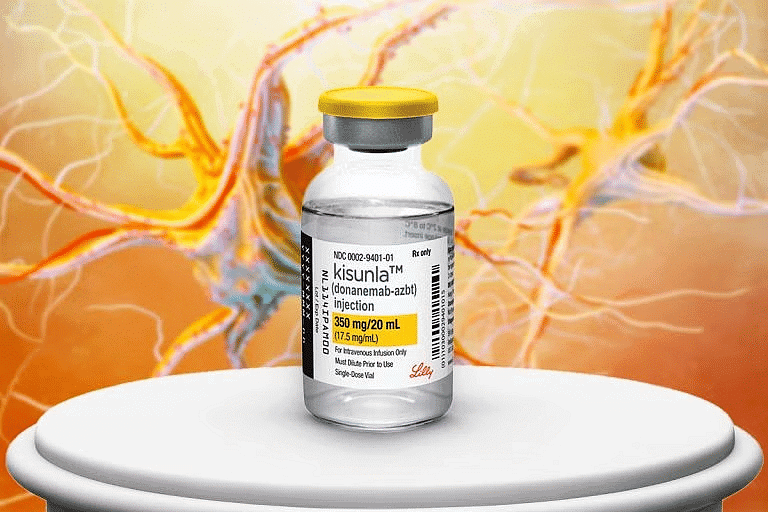
Donanemab, a new Alzheimer’s disease therapy developed by Eli Lilly, has gained unanimous support from independent scientists advising the US Food and Drug Administration (FDA), moving it closer to clinical use.
How do the benefits of the drug stack up against its risks?
- Target Population: The drug is intended for those in the early stages of Alzheimer’s disease (mild cognitive impairment or mild dementia).
- Benefits: Significant clinically meaningful slowing of the disease, allowing patients to retain their functions for a longer time. Phase 3 study shows a 35.1% slowdown in cognitive decline in early Alzheimer’s patients over 76 weeks.
- Risks: Main adverse effects include brain swelling (24%) and brain bleeds (19.7%), with most cases being asymptomatic.Three treatment-related deaths reported.Amyloid-related imaging abnormalities (ARIA) like brain bleeds and seizures were mostly non-serious and resolved after discontinuation of therapy.
- Risk Management: The key risks can be mitigated through appropriate labeling and clinical monitoring. Further risks will be characterized through post-authorization studies.
Why is a breakthrough of this kind important?
- Rising Burden of Alzheimer’s: The global population is ageing, leading to an increased burden of diseases like Alzheimer’s. In India, 5.3 million people are currently living with dementia, expected to rise to 14 million by 2050.
- Lack of Effective Treatments: There are limited options for disease-modifying treatments for Alzheimer’s. Innovations like donanemab are crucial for providing new hope and potential therapies.
- Economic Considerations: While the drug is expensive, it offers the potential for several more years of quality life for patients.
Why was the approval for the drug delayed?
- Additional Data Requirements: The USFDA wanted to understand further the data relating to the therapy, especially regarding the limited dosing protocol used during trials.
- Limited Dosing Protocol: During the trial, therapy was stopped in patients who achieved a certain level of amyloid beta plaque clearance, which is a distinguishing feature of donanemab compared to other therapies.
- Previous Drug Approval Irregularities: Scrutiny increased after irregularities were found in the approval process of the first drug, aducanumab, which involved close collaboration between the regulator and the drugmaker and approval despite negative trial outcomes. The second drug, lecanemab, also had cautious optimism from doctors due to its demonstrated efficacy with fewer side effects.
Conclusion
Ensure rigorous and transparent review processes for new Alzheimer’s treatments, incorporating comprehensive data analysis and post-authorization studies to monitor long-term safety and efficacy.
‘Multi-omics’ Approach to Tackle Diseases
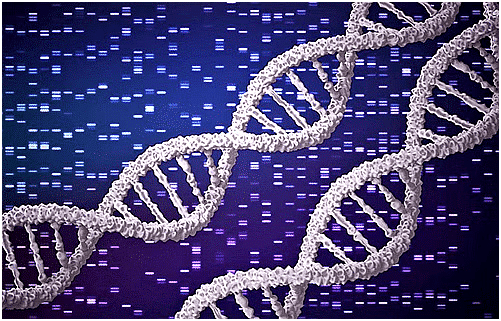
Why in news?
India is leveraging advanced genomics and multi-omics technologies to revolutionize the diagnosis and treatment of diseases like tuberculosis (TB), cancers, and those caused by antimicrobial resistance.
Multi-omics integrates genomics, proteomics, transcriptomics, and epigenomics to provide comprehensive insights into disease mechanisms and treatment responses.
Genomics Initiatives in India
Genome India Project
- Objective: Develop a reference genome for Indian people.
- Milestone: Sequencing 10,000 genomes from 99 ethnic groups.
- Applications: Design low-cost diagnostics and disease-specific genetic chips.
IndiGen Project
- Create a pilot dataset for analyzing genetic diseases.
- Sequencing genomes of 1,008 individuals from diverse ethnic groups.
- Develop affordable screening approaches, optimize treatment, and minimize adverse events.
Disease-Specific Consortia
Focus Areas: TB, cancers, rare genetic disorders, and antimicrobial resistance.
Tuberculosis (TB)
- Indian Tuberculosis Genomic Surveillance Consortium (InTGS): Sequence 32,000 TB clinical strains and develop a repository of Mycobacterium tuberculosis strains.
- Goals: Map genetic diversity, correlate mutations with drug resistance, and develop sequence-based drug resistance determination methods.
Rare Genetic Disorders
- Paediatric Rare Genetic Disorders (PRaGeD) Mission: Create awareness, perform genetic diagnoses, discover new genes, provide counseling, and develop therapies.
Cancers
- Indian Cancer Genome Consortium (ICGC-India): Characterize genomic abnormalities in various cancers and identify population-specific genetic variations.
- Indian Cancer Genome Atlas Project: Create a comprehensive catalogue of genomic alterations in Indian cancers.
Antimicrobial Resistance
- Role of Genomics and Metagenomics: Analyze antimicrobial resistance and identify resistance profiles without lab cultures.
AI, ML, and Multi-omics
AI and ML in Genomics
- Predict cancer risk, develop diagnostic tools, classify cancers, and develop treatment strategies.
Data Analysis
- AI and ML facilitate the analysis of large genomic datasets, identifying disease-causing variants.
Multi-omics Integration
- Combine genomics, proteomics, transcriptomics, and epigenomics to provide holistic insights into disease mechanisms and treatment responses.
Technological Advancements
- Standard computational facilities can now handle multi-omics Big Data products rapidly.
- Conclusion: By integrating AI and machine learning, researchers are able to extract valuable insights from extensive datasets, paving the way for personalized medicine and improved patient outcomes.
Space MAITRI Mission
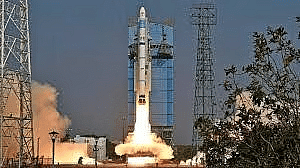
Why in news?
Recently, the Australian government signed an $18 million MoU with NewSpace India Limited (NSIL) for the Space MAITRI mission.
About Space MAITRI Mission:
- Mission for Australia-India's Technology, Research, and Innovation (MAITRI) signifies a significant advancement in the strategic partnership between India and Australia in space.
- The mission aims to strengthen collaborations among commercial, institutional, and governmental space entities of both countries.
- It primarily focuses on debris management and sustainability to uphold responsible space operations and combat the threat of space debris.
- NSIL will launch Australia's Space Machines Company's Optimus spacecraft in 2026.
Key facts about NewSpace India Limited:
- NSIL, under the Department of Space (DoS) of the Indian government, was established in March 2019 to handle high-tech space activities in India.
- Following the new space policy reforms of June 2020, NSIL operates on a demand-driven model for satellite missions.
- It is headquartered in Bengaluru and is responsible for building, launching, owning, operating satellites, and providing services.
|
164 videos|800 docs|1157 tests
|





















